Workers' huts of famous writers
Categories: Book | Design and Architecture | Nations | People | Photo project | Science | Society | World
By Vika https://pictolic.com/article/workers-huts-of-famous-writers.htmlWriters usually have their favorite places to work, a small, secluded space, sparsely furnished, where creativity flows unhindered. The environment chosen is usually not distracting, such as a library, hotel room, car, or even a prison cell. Many important literary works were created in prisons. Indeed, locking in with just a typewriter or pen and paper is a smart strategy. The Hunchback of Notre Dame was only possible because Victor Hugo placed himself under house arrest and locked his clothes to avoid the temptation to go out. Many famous writers had secluded writing rooms away from home and the hustle and bustle of home life. Let's take a look at some of them.
11 PHOTOS
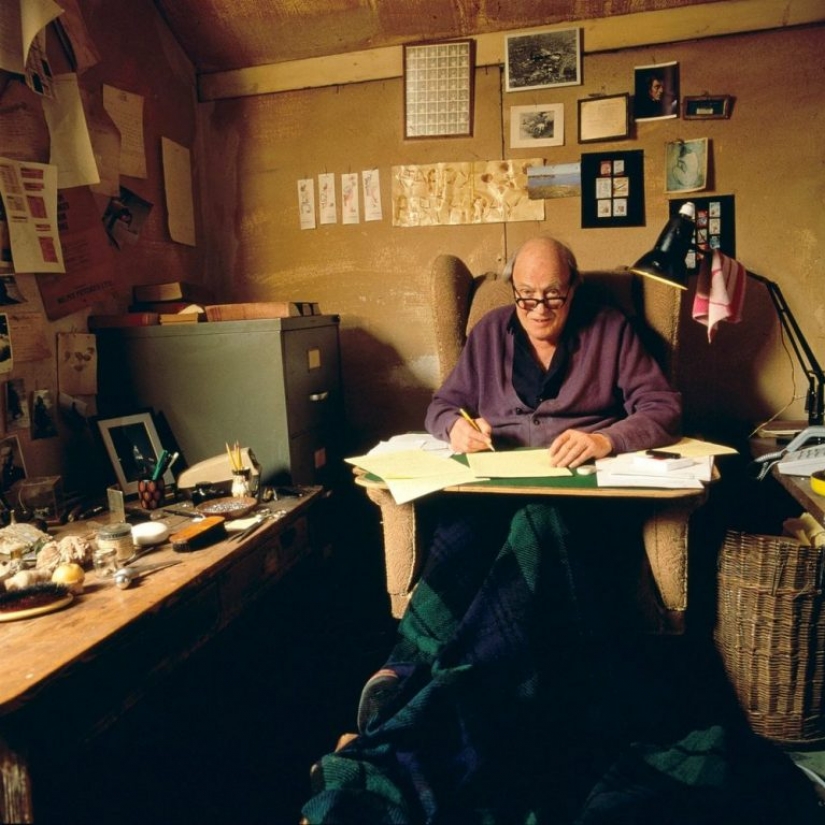
1. Roald Dahl.
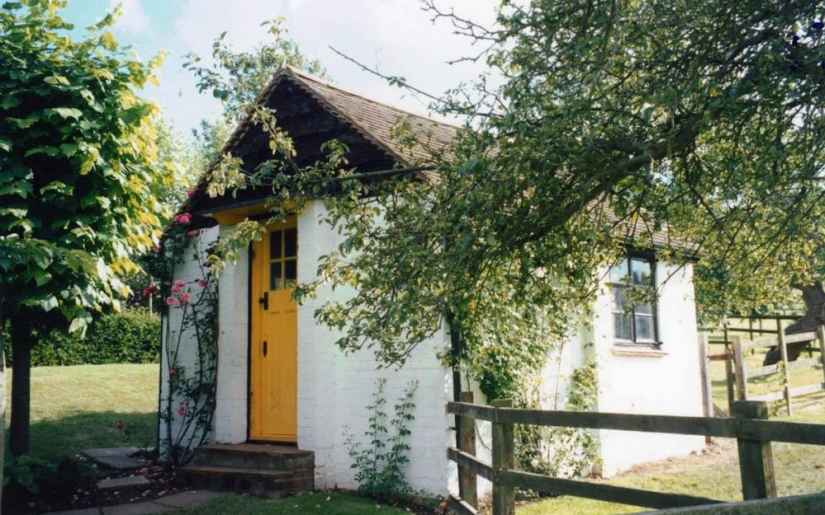
2. Roald Dahl had a small writing hut in Great Missenden, Buckinghamshire, where he wrote many of his famous stories. Inside the small hut, Dahl surrounded himself with paintings, inspirational quotes, and photographs of family and friends. He sat in a chair that used to belong to his mother. When it was cold, he covered his legs with a sleeping bag. The desk was filled with the mementos that inspired him — a ball of shredded silver foil of KitKat chocolate wrappers, the brass decoration of the Spitfire, and his thigh bone saved from his thigh replacement. The only light in the hut came from a corner lamp.
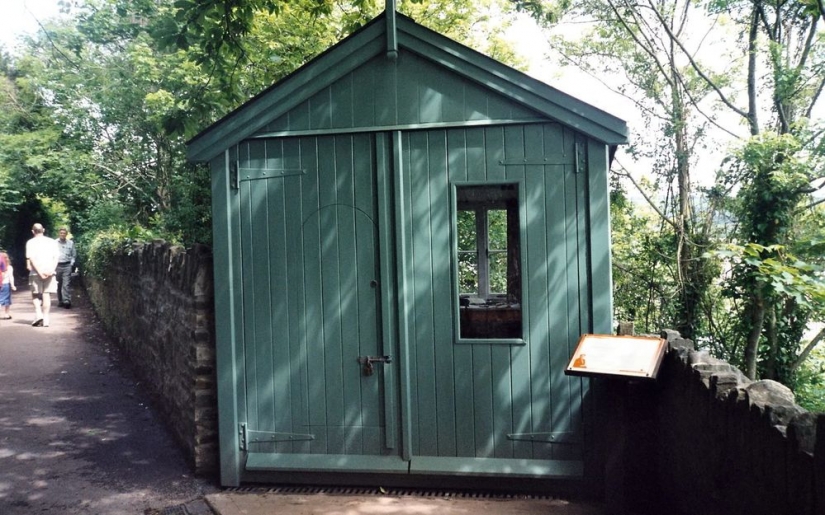
3. Dylan Thomas.
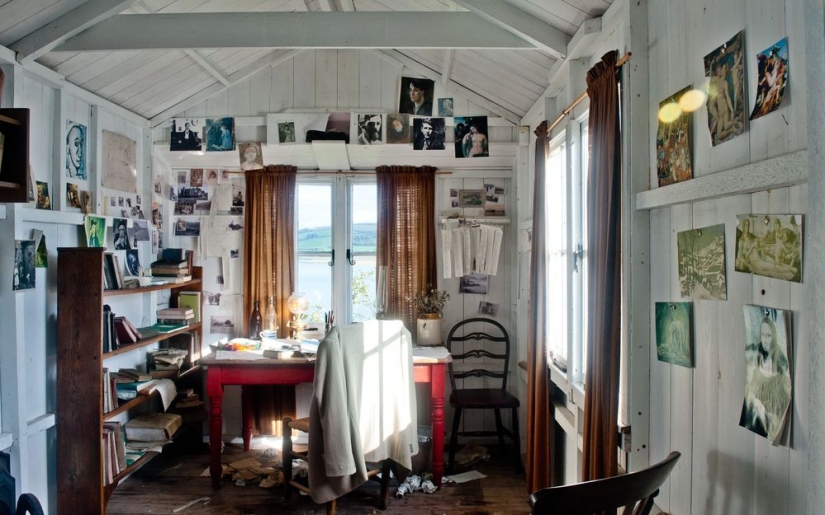
4. Dylan Thomas was the inspiration behind Roald Dahl's writers' hut. The Welsh poet had a writing hut in Carmarthenshire, not far from his home, on the cliffs overlooking the mouth of the Tuf River, where he wrote many of his major works.
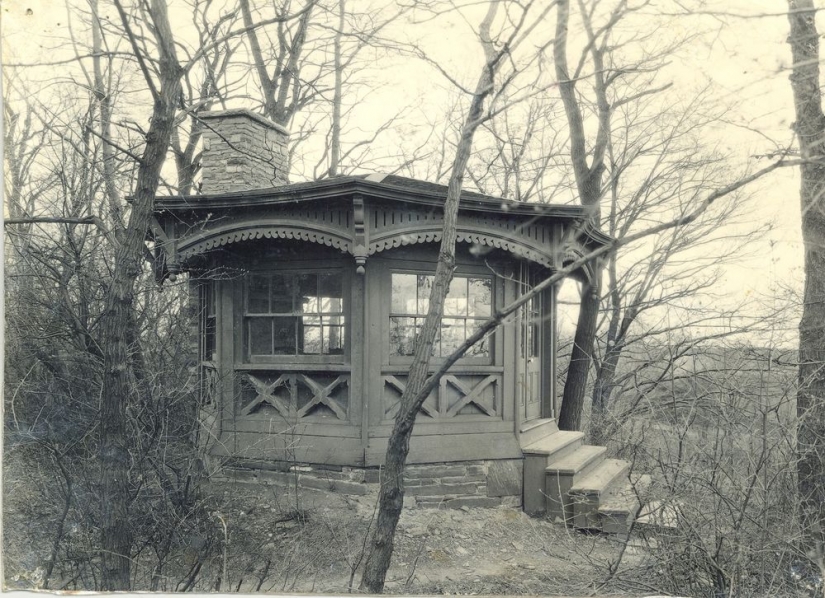
5. Mark Twain.
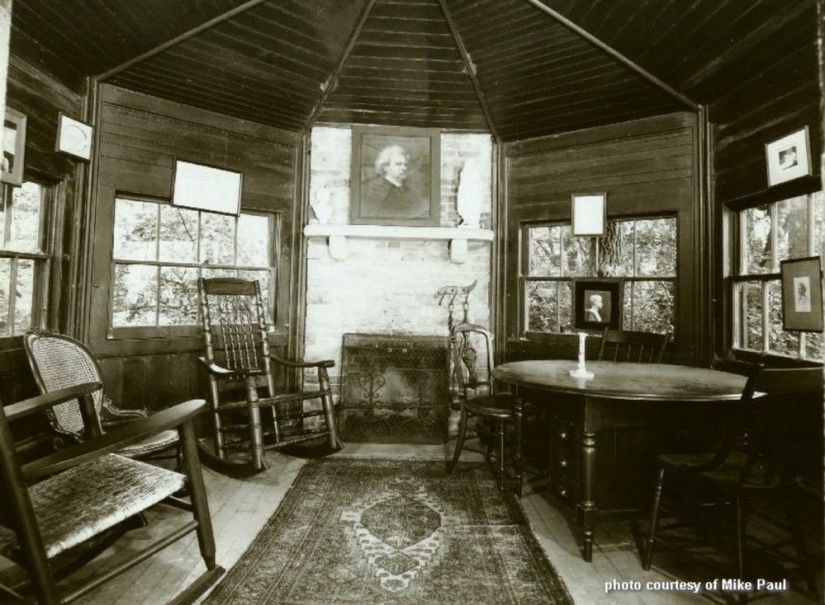
6. Mark Twain had an octagonal office located on an impressive promontory overlooking the Chemung River in Elmira, New York. It was built by his sister-in-law, Susan Crane, who wanted Mark Twain not to be in her house because he smoked. The wooden cabinet was about 3.6 meters across and resembled the pilot's house of a Mississippi steamer. Twain called it "the most beautiful study you've ever seen."
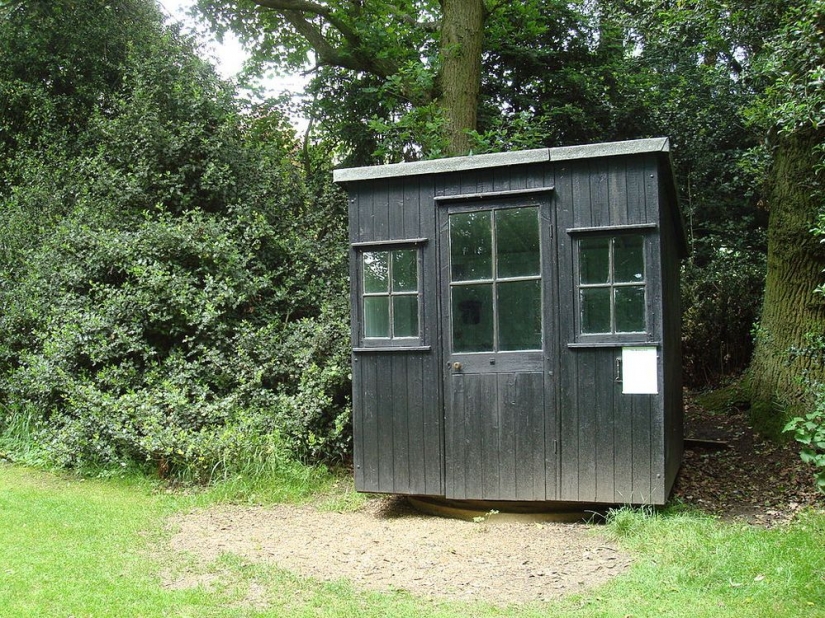
7. George Bernard Shaw had a unique revolving hut that could be easily rotated to let in the sun.
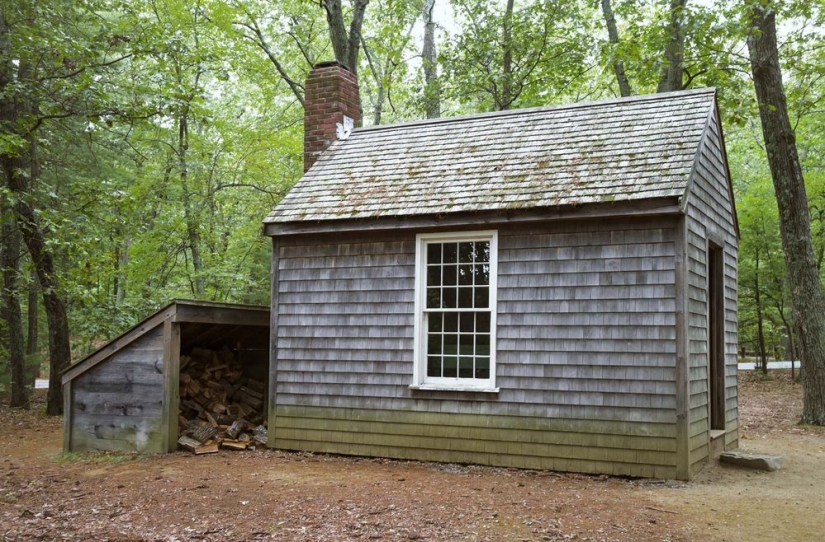
8. Henry David Thoreau.
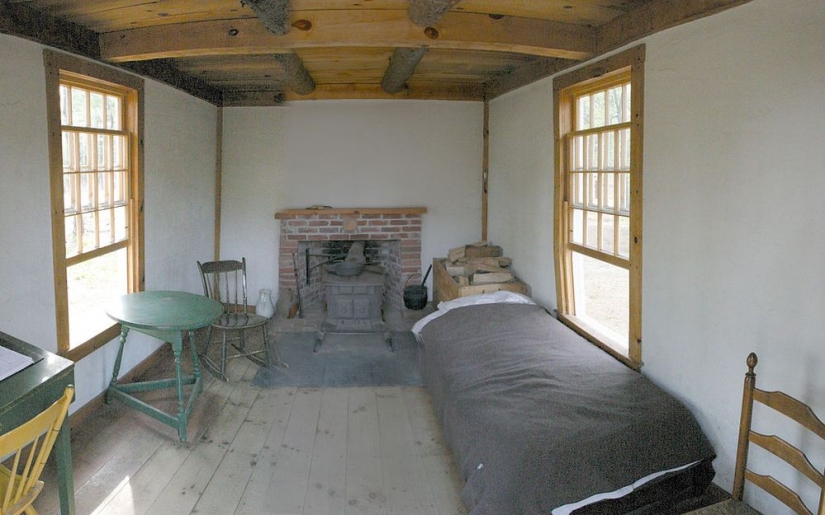
9. American naturalist and philosopher Henry David Thoreau spent exactly two years, two months, and two days in a secluded hut he built near Walden Pond, a lake in Concord, Massachusetts, where his friend and mentor Ralph Waldo Emerson owned a forest. Thoreau used this time to write his first book, A Week on the Concorde and Merrimac Rivers. Later, Thoreau wrote another book, his most famous, called Walden, or Life in the Forest, in which he talked about his experiences of living in isolation.
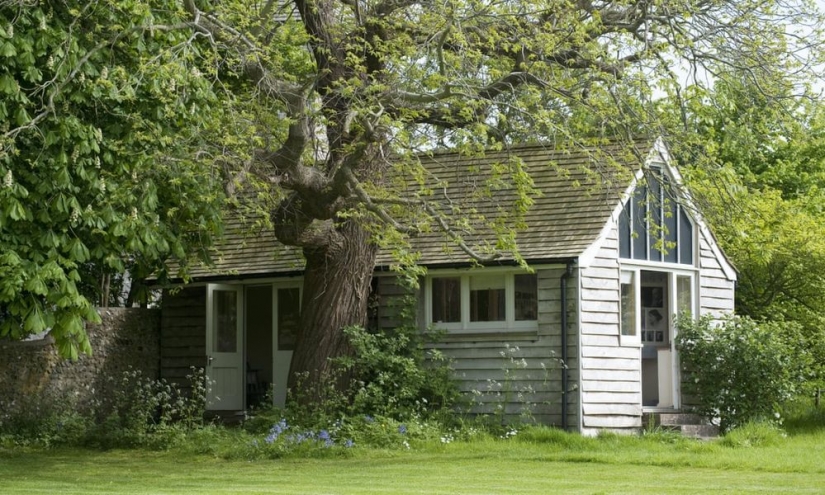
10. After Virginia Woolf and her husband bought a 16th-century cottage in the village of Rodmell, Sussex, England, Woolf built a small wooden tool shed in the garden that was converted into a writing room. It was not the most comfortable of the rooms. She was always distracted by her husband sorting apples over her head in the attic, church bells at the bottom of the garden, and the noise of children at the school next door. In winter, it became so cold in the hut that she could not hold the handle and went into a closed room. Five years later, Wolfe moved her writing house to the far end of the garden, under a chestnut tree next to the flint wall of the cemetery. In this box, Wolfe wrote parts of all her major novels, from Mrs. Dalloway to Between Acts, as well as many essays and letters.
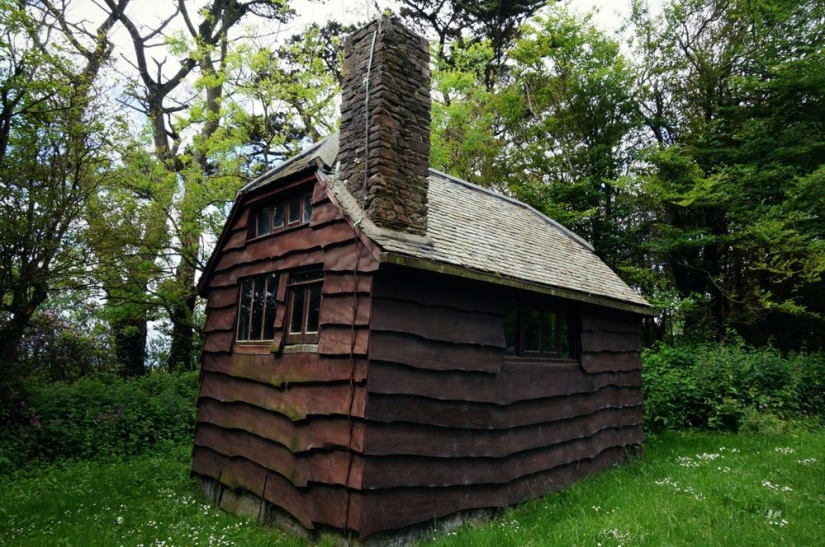
11. Henry Williamson, best known for his book The Otter Called Tarka, built a wooden hut near Georgeham with a cash prize he won in 1928 with the Hawthorden Prize for the aforementioned book. Williamson wrote many of his later books there, sitting alone in a hut for 15 hours a day.
Keywords: Writer | Book | Room | Hut | People | Home | Library | World
Post News ArticleRecent articles

No matter how we strive for positive, but negative feelings and emotions are an integral part of our life. And if you can’t avoid ...

If your mailbox is located outside, this is the first thing that catches your eye when someone comes to your door, whether it's the ...
Related articles

This kotmadam not sorry neither forces, nor means to that beloved furry face was happy. In Switzerland, the cats are so sensitive ...

Nikolai Vasilyevich Gogol is not just a classic, but the first major Russian prose writer, who was considered his teacher by many ...

Hans Christian Andersen wrote many fairy tales, but among them very few stories with a happy ending. Especially given the female ...

At the word "harem" most people come up with colorful pictures-an abundance of seductive half-dressed women, gurgling water ...